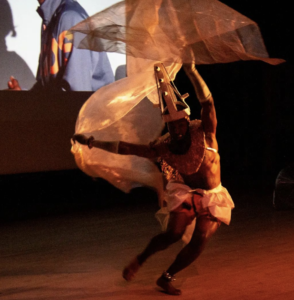Artist Ajmal ‘Mas Man’ Millar will facilitate a participatory sound activation referencing his Trinidadian heritage.
We invite you to join us with artist Ajmal ‘Mas Man’ Millar for a special rite of passage participatory sound activation using found metal, which the artist uses often within their practice. Traditionally, rites of passages have functioned as a critical tool of individual rejuvenation and cultural interconnection.
Ajmal’s use of metal within this program is inspired by and symbolic of the ‘riddim section’, which is specifically linked to African diaspora percussions.

Each participant is encouraged to bring found metal (without sharp edges) that they have access to.
The session will encompass:
– Introductions and group welcome where each participant will share their found objects with the group
– Several exercises to build cognition, individuality, improvisation, and harmony.
– Ajmal will also provide a variety of metal rods and wooden sticks used to strike the metal, thus collectively producing waves of sound in the likeness of steel drums.
***The session will be sonically recorded, and video documented.



